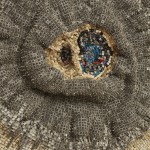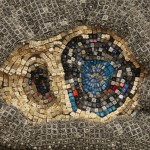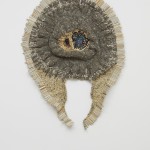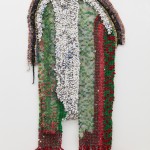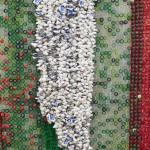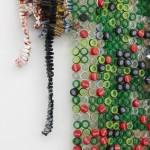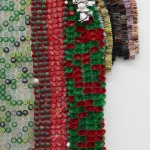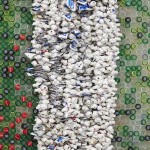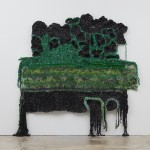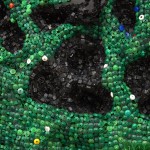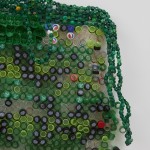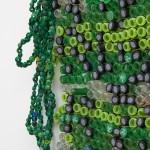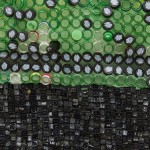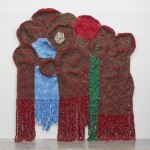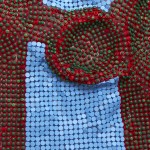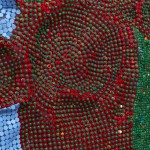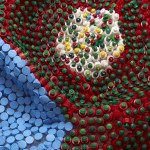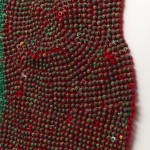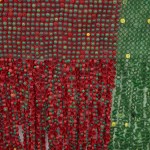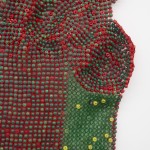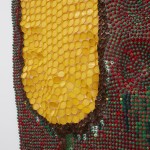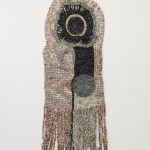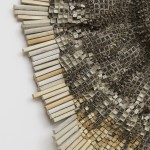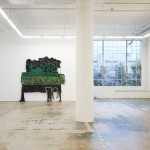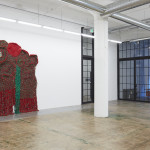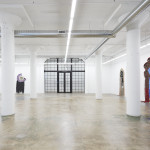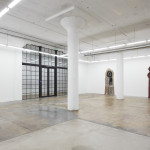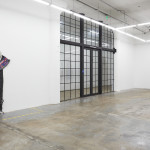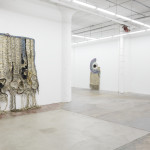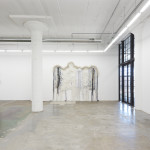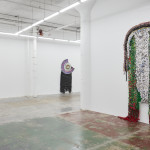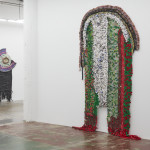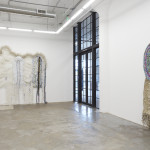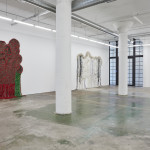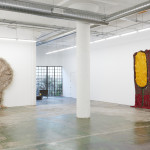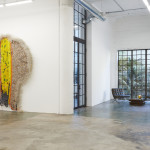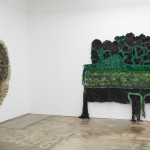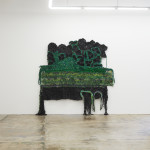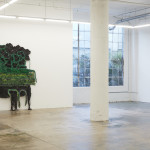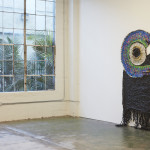Son of the soil | Moffat Takadiwa
Título | Son of the soil 2019
Nicodim Gallery is pleased to present Moffat Takadiwa’s (b. 1983, Karol, Zimbabwe) first solo exhibition in the United States. Takadiwa reassesses his own Korekore craft culture through the appropriation of garbage from the West, elevating found objects into sculptural forms that engage with issues of cultural identity, language, social practice, and the environment. All of his artworks are composed from the discarded remains of consumer waste, woven together in the language of traditional Zimbabwean textiles. Macrobiotic in his approach to material, his repurposed objects tell stories of each piece’s past lives to viewers brave enough to confront their own ecological and colonial legacies.
Throughout recent decades, Zimbabwe’s government has been in a state of constant flux, not so much democratically self-ruled as dominated by corrupt officials eager to sell the country’s natural, historical, and spiritual resources to the highest bidder. Corporate and geostrategic interests from China, Russia, Britain, and the U.S. prey upon political unrest. A collapsed economy precludes any opportunity for students in Zimbabwe to acquire new art supplies, so the country’s boundless landfills became Takadiwa’s muse. His work draws attention not only to the problems of waste management and global consumption patterns, it actively encourages us to question our daily activities.
Takadiwa’s wall-mounted golems are brought to life from the discarded toothbrushes, keyboards, aerosol lids, and vaccine bottles of Los Angeles, New York, Chicago, and other industrialized cities reincarnate. He considers his impossible tapestries a sort of post-colonial African Dada; the strands of keyboard pads and plastic bits spiral in allegorical urinals within the work. The oft-romanticized abundance of natural resources in Africa remains a Eurocentric mythology. Western waste allows past colonizers to repopulate the lands of their former settlements with trash as a stand-in.
Land reappropriation, a key pillar of the African Liberation Movement, plays a major role in Zimbabwe’s contemporary political agenda, with issues of ownership, control, distribution, access, and displacement not adequately addressed by the post-colonial regime. Disputes over the control of property have often occurred between and within states on the continent. The visual language Takadiwa employs is born of the land itself, with artworks in the exhibition inspired by scale models of Hurungwe tobacco farms and their topographical faults, ridges, valleys, and hills and the plastics that litter them. Takadiwa’s work seeks to answer colonialism with the visual force and will of his own people.
Biography
Moffat Takadiwa lives and works in Harare, Zimbabwe in the neighborhood of Mbare, one of the biggest hotspots for the recycling and repurposing microeconomy in the country. For years, Takadiwa has been utilizing his practice with a focus on rehabilitating his community, promoting an urban development project with the goal of establishing a community-oriented arts district. Working with local upcoming young artists and young creatives, Takadiwa aims to create the world’s first arts district made of reused and repurposed materials. Takadiwa graduated with a Fine art Diploma from Harare Polytechnic College, Zimbabwe in 2008. Part of the post- independence generation of artists in Zimbabwe, Takadiwa has exhibited extensively across major institutions in Zimbabwe as well as internationally. Recent exhibitions include Stormy Weather, Museum Arnhem, The Netherlands (2019); Second Hand, Jameel Arts Centre, Dubai (2019); KUBATANA, Vestfossen Kunstlaboratorium, Oslo (2019); Ex Africa – storie e identità di un’arte universale, Museo Civico Archeologico, Bologna.
TAKADIWA, Moffat. Son of the Soil. ClimaCom – Florestas [online], Campinas, ano 7, n. 17. Maio. 2020. Available from: https://climacom.mudancasclimaticas.net.br/moffat-takadiwa-forests/
SEÇÃO ARTE | FLORESTAS | Ano 7, n. 17, 2020
ARQUIVO ARTE |TODAS EDIÇÕES ANTERIORES

